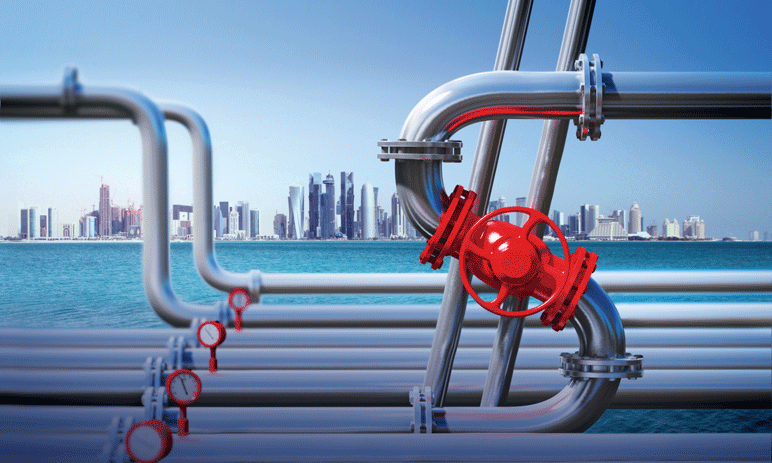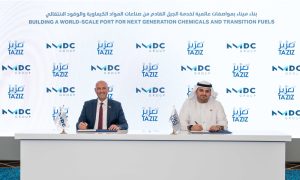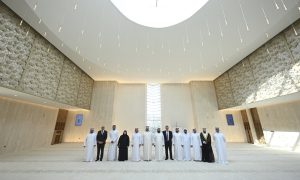Qatar’s MEP business hit by disputes and delays
Subcontractors and legal experts explain why the industry is having such a difficult time

When it comes to the construction of a project, the installation and construction of MEP systems and services are among the most crucial aspects of the job. Not only are MEP and HVAC systems vital to the long-term future of a building, but getting them right takes skill and careful planning.
So it would be normal to assume that MEP contractors are considered among the most valued and sought-after contributors to a construction project, but that’s not quite the case in the GCC, as many an MEP contractor will tell you.
Given the pace and rate of development in the area, it’s understandable that contractors and subcontractors come under a variety of pressures from different sources. Whether it’s the developer demanding a project be delivered on time, a consultant looking to cut costs or a supplier failing to live up to requirements, these are all issues that most contractors and subcontractors accept they have to deal with.
However, in a market like Qatar, some disturbing issues keep cropping up time and time again, shining the spotlight on a construction industry that is looking increasingly dysfunctional as the clock ticks ever closer to the 2022 World Cup.
Leaving aside the controversies surrounding workers for a moment, concerns have to be raised about how delayed payments and contract wrangles are hindering the ability of the industry to function as a cohesive whole. While worker health and safety justifiably dominates international headlines, the delays in payments and breaking of contracts will have serious repercussions that will reverberate throughout the industry.
No one feels this more than MEP contractors, who have seen their cash flow affected by delayed payments, which in turn causes a host of issues, from being unable to pay staff on time through to losing out on work due to not having the resources to compete.
“Delayed payments which affect cash flow [are a major issue in Qatar],” says Murali S, managing director of Al-Futtaim Engineering, a Dubai-based MEP contractor with operations in Qatar. “Regular cash flow has been a structural problem that is affecting the whole industry. As a result, we’re being selective in the projects we work on, in order to ensure better cash flow.”
As the CEO and co-founder of Doha-based MEP contractor Arabian MEP, Vasanth Kumar is only too familiar with the issue of delayed payments. Speaking to Big Project ME, he paints a fairly gloomy picture of present conditions in the Qatari market.
“Taking an overall view of the MEP market in Qatar, all these years we’ve been growing at a steady double-digit growth, but now the economic recession, sliding oil prices and budget deficits have put the whole thing in slow motion. We’re all readjusting our forecasts, and the best we can do is maintain last year’s figures,” he says.
“If required, we can still grow, but there are tremendous risks involved. The main issue is the lack of liquidity in the market. If you’re ready to finance a project, then yes, you can take the job. But if you look for something with a positive cash flow, whether it’s an advance payment or timely progress payment – which are key for contractors – it is hard to see it in reality, as everyone is looking for a longer payment cycle.
“With the recent introduction of the Wage Protection System (WPS), it has become even more challenging for contractors. In contracting, 20% to 30% of contracts are related to wages. If you don’t pay your workers on time – by the first week of the following month – then the company will be blacklisted, visas will not be given and there are a lot of penalties,” he explains.
Niall Clancy, principal associate for Qatar at international law firm Eversheds, agrees that delay is one of the big challenges MEP subcontractors face, adding that his firm has recently seen an increase in consultations about claims for delayed payments.
“I think it goes without saying that it’s fast becoming a serious problem for contractors and subcontractors alike. The speed of payment really does depend on how far down the list of priorities the MEP subcontractor is, and to some extent that is dependent on the stage of construction.”
Kumar chimes in to say that MEP contractors need to make sure that they have adequate cash or working capital to take on projects, otherwise they face getting stuck in an unpleasant situation in which the main contractor has to buy materials on their behalf.
While this may sound fanciful to some, when you consider that replacing an MEP contractor halfway through a project is likely to work out to be far more expensive for the main contractor, it becomes clear that both parties are caught between a rock and a hard place.
“The main contractor has no option but to fund the subcontractor’s operation, pay the bills and at the end of the day adjust it against his final account,” says Kumar. “What is happening is that the contract payment terms mentioned in the document are not honoured. The contract may say that it’s a 30-day payment cycle, but the reality is that you’re lucky if you get it in 90 days. Sometimes it goes on for months, or even a year. And if we’re talking about the final account, it could take years!”
Delayed payments is an issue that affects everyone, Kumar insists, recollecting a recent conference where the bulk of attendees were more interested in talking about the shared issues they faced.
“For us, being an MEP contractor, there are only two paths you can take at this point in time. Either you want to grow, or you want to reduce your exposure. We’ve taken a stand to reduce our exposure. We would like to consolidate and not expose ourselves to contracts which have a lot of ambiguity and disputes.”
As a partner in a joint venture, Al-Futtaim Engineering, this is something that Murali S says they are particularly wary about. Having dealt with delayed payments themselves, he stresses that they take pains to ensure that there is a meaningful collaboration between like-minded companies.
“At present, we are in a joint venture with a major MEP contractor in executing two large retail development projects. Working together in a joint-venture relationship has provided us with synergies in various functional disciplines of the project and contractual administration of these projects,” he explains.
“We have jointly developed a supply chain of new subcontractors and equipment suppliers, which will in fact benefit the local Qatar construction industry, since the selected subcontractors are now trained in the best practices in the industry.”
In fact, he’s adamant that joint ventures can bring a lot of benefit to Qatari construction by improving standards and performances, while also impressing upon the market the importance of following proper processes and procedures.
“International companies bring in newer health and safety practices, sustainability requirements, environmental regulations and so on, which shall benefit the region as a whole. They’re also more systematic and have better productivity levels, as compared to local companies who have a strong presence in the Gulf.
“Conversely, they have may have lesser exposure to fast-track jobs. So the processes followed by these international firms – to structure their work and achieve higher productivity levels – has to be integrated with the fast-track nature of the projects in Qatar,” Murali asserts.
Niall Clancy points out that this fast-track approach is something that MEP subcontractors will be forced to contend with as the deadline to the World Cup gets ever closer.
“The developers or state entities are going to be under increasing pressure to complete – and they’re going to start coming under even greater pressure – to complete the World Cup-related projects on time. Some of them have started late and are already facing delays.
“There’s a general reluctance to award extensions of time. Instead, developers are relying on their liquidated damages provisions to put pressure on the contractors to complete the projects, and in turn, the contractors are then going to do the same to exert pressure on the subcontractors.
“Where MEP subcontractors fit into the equation is that they’re quite often blamed for delays. Typically they’re quite a major part of the works, but they tend to come in later on the project and they depend heavily on other contractors for their success.
“In my own experience, where I see their performance being hindered is when they’re appointed late, which reduces the time they have to perform. A related issue to that is unrealistic programming, where if they’re appointed late and you have an unrealistic programme, then all the activities are compressed together to make them fit within the timeframe for completion.”
Kumar agrees with this, adding that variation is another critical issue facing MEP contractors in Qatar.
“No project is built exactly to design, there’s always changes. But when the changes happen, they could be positive or negative, meaning it could be a positive variation or a negative claim. What we’ve seen is that while negative claims are immediately processed, positive claims are not decided until the project is completed.
“These days, we’re looking at huge positive claims, but how do they expect the subcontractor to finance and complete the job? I’ve seen cases where, once the project is completed, it is extremely difficult to contact the people, to talk to them. You’re basically at the client’s mercy, waiting indefinitely, and in the end you may just write off the outstanding amount.”
This is certainly a problem, given that MEP contractors tend to operate on razor-thin margins of profit. If there are variation works on a project that are not approved or recognised, or not paid, then the result will be negative cash flow and losses for the affected company.
“Variations on MEP contracts are notorious for causing delays in construction and loss of productivity,” says Niall Clancy. “If you’re going to upgrade a system, then it’s not enough to upgrade just a mechanical part. It may require ducting, it may have to come out and new ducting will have to go in, which can cause further delays.”
“I think the major obstacle here is if you have an unsophisticated contractor or developer who doesn’t really understand what an MEP contractor has to do to successfully complete his work. Where you have an unsophisticated party, you need to do considerable persuading before they’re willing to grant an extension of time or award any delay-related costs,” he adds.
In order to combat this, he suggests that MEP contractors ensure that their site staff are trained and knowledgeable, not only about delay and the causes of delay, but also about the contract they’re working on.
“One of the big barriers that I see is staff that fail to detect delay or that they simply don’t follow the contractual method for claiming. I think when that happens, the vital back-up – the proof of delay – is lost, and then you have a bit of an open goal for main contractors and developers to reject claims on that basis.
“I think it’s very important – and this is something this office is becoming increasingly involved in – to help subcontractors put together clearer and more concise claims, demonstrating their entitlement. I think it’s very important that this is done at the outset.
“It ties back into unsophisticated developers and contractors, because again, they’re more likely to kick it off into litigation and arbitration if the claim is not really clear. A particular bugbear of mine is when senior management aren’t involved at an early stage, and when they are, they don’t fully understand the nature of the claim or the other side’s position. In particular, it’s when they don’t know what their alternatives are to negotiating a settlement, or if a settlement may be on the table, whether litigation or arbitration is a better option,” Clancy says, adding that contractors often have concerns about going to arbitration, but sometimes a better result can be achieved by doing so.
“I think what happens all too often in construction is that the first time you see a meaningful discussion take place is at the arbitrator hearing, because it’s only then that the claim that’s already protected arrives and the senior management are finally informed of what the strengths and weaknesses of the claims are. When that happens, it’s actually incredible to see the number of cases that are actually settled, and then everybody wonders about the huge amount of cost that was spent getting that claim to that place and position.”
With conditions as they are in Qatar at the moment, Kumar isn’t very positive about the way things are shaping up for the MEP subcontracting industry, pointing out that the prolonged slump in oil prices will reduce new project opportunities in the market. This means that the overcrowded contractor market will resort to low-price bidding wars and agreeing to whatever clients offer, he predicts, which in turn will make things go from bad to worse.
“The contracting industry is not properly structured in this part of the world and all major decisions are purely commercial, in which the lowest bidder will win, regardless of technical capabilities,” Kumar says, striking a morose tone.
“If you look at how tenders are awarded to contractors, there’s a big price difference here. Since no contractor would like to make a loss, he will try to defend himself and create a resistance. But a client doesn’t want such things to happen, so they try to enforce the lopsided condition of the contract, where the contractor does not have any standing. So there’s always dispute and bitter arguments that lead to delays, arbitration, litigation, penalties and, in recent cases, the termination of contract and cashing in of the bond.”
This is down to where the MEP subcontractor exists on the construction food chain, Kumar says. Being fully dependent on the contractor, consultant and client, there aren’t many options available to an embattled subcontractor.
“The main contractor is safe, because MEP subs are placed under them. So what they do is adopt a back-to-back contract, which means that only if the client approves, then they will approve your payments and variations,” he says. “So it’s the MEP subcontractor who’s taking all the risks, executing all these change order works, putting in all of his money and risking not getting paid.”
Despite industry gloom, Niall Clancy says there are still reasons for optimism in Qatar, pointing out that a mechanism in the country’s laws allows subcontractors to actually go around the contractor in the priority rankings for payment.
“It has its origins in the French civil code, which has heavily influenced the civil codes in the Middle East. Some countries don’t have it, they certainly don’t have it in the UAE, but Qatar certainly does, it’s one that I’m seeing being increasingly used.
“There’s a provision out here where subcontractors can, in certain circumstances, bring direct claims against the developer – the employer – bypassing the contractor completely. From their perspective, it’s something that’s quite helpful and it’s something that not all subcontractors in Qatar are aware of. There have been a few surprised faces when we’ve discussed it!
“I think the government of Qatar has gone further in that regard than some of the other jurisdictions in the Middle East. From that side of things, the government is quite proactive on that front, but inevitably there will be difficulties. Those are going to centre around claims of delay, which to me is one of the most commonly sought issues in construction disputes in the Middle East,” he concludes.

























